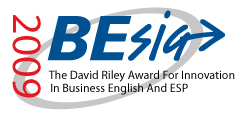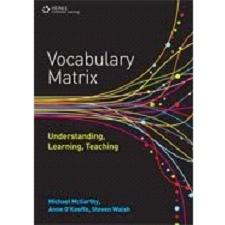Short Book Reviews
Hanna Kryszewska, Poland
Hanna Kryszewska is a teacher, teacher trainer, trainer of trainers. She is a senior lecturer at the University of Gdańsk, and EU Teacher Training College where she trains pre-service teachers. She is also Director of Studies at SWPS, Sopot, Poland. She is co-author of resource books: Learner Based Teaching, OUP, Towards Teaching, Heinemann, The Standby Book, CUP, Language Activities for Teenagers, CUP and a course book series for secondary schools: ForMat, Macmillan. She is also co-author of a video based teacher training course: Observing English Lessons. Hania is a Pilgrims trainer and editor of HLT Magazine.
E-mail: hania.kryszewska@pilgrims.co.uk


English for Law Enforcement. C. Boyle and I. Chersan.. (2009) Macmillan. ISBN 978-0-23072589-6, pp127. This new course is intended for law enforcers, customs officers, military police, security personnel and police officers. It is the second Macmillan publication along the same line: the first one being Campaign which is designed to meet the needs of military personnel. Clearly Macmillan is filling in a gap in the market. Needless to say, English as a lingua franca does not apply only to spheres like culture, medicine or business. With more and more international military and law enforcement cooperation English is becoming a lingua franca there, too. The ELT market has to address their needs. Try to imagine the contents of the book…
Yes, there are the typical ELT topics but with a law enforcement twist e.g. everyday objects include lexical items like a bullet proof vest, a uniform, a badge, handcuffs etc., while the unit on working life compares the work of the carabinieri, the Japanese police and the Finnish boarder guards. The alphabet is taught with the help of car makes and car models and practised on vehicle registration plates. The subject of driving and traffic includes parts of the car, driving licence details, driving offences and penalties, as well as unusual driving laws round the world. I like the way each topic is treated and how successfully the authors weave the professional content around the general language backbone. The illustrations in the book contain authentic photos, diagrams, drawings and other nice bits like smudged, blurred and faint fingerprints, scans of ID cards and driving licences. What will be the next title in the series… let us make a bet: English for physiotherapists or clergy? Joking apart… this is a very CLIL book. Well done!

Vocabulary Matrix. M. McCarthy, A. O’Keeffee & S. Walsh (2010) Heinle CENGAGE Learning. ISBN 978-1-4240-5253-0, pp 165. The book is rooted in the corpus analysis of the language and offers a new insight into the teaching of vocabulary, or to be more precise into the teaching of lexis. Why lexis not vocabulary? Because, in my understanding, ‘vocabulary’ is about individual words while ‘lexis’ is about chunking and priming. Hence, I would prefer the authors used the word ‘lexis’ throughout.
The book is described as ‘ an innovative resource for language teachers’, ‘ a guide to the methodology of vocabulary, a book that ‘offers clearly written theories and keeps a compelling focus on practical teaching applications’. And indeed this is what it is. I would compare this publication to Discover English by Rod Bolitho and Brian Tomlinson. In both the books the teachers, native and non-native, go through consecutive stages of language discovery on their path to better understanding of the language they teach and hence to improving their teaching.
The chapters in Vocabulary Matrix cover among others: words and their forms, words and their meanings, collocations, the grammar of words in text and discourse, just to name few. As a linguist who drifted into ELT, I am thrilled and I thrive when I read the book. As a teacher trainer I am peeved as there is no photocopiable material to be used in the training sessions.

Please check the CLIL - Teaching Other Subject Through English course at Pilgrims website.
Please check the Methodology for Teaching Spoken Grammar and English course at Pilgrims website.


|